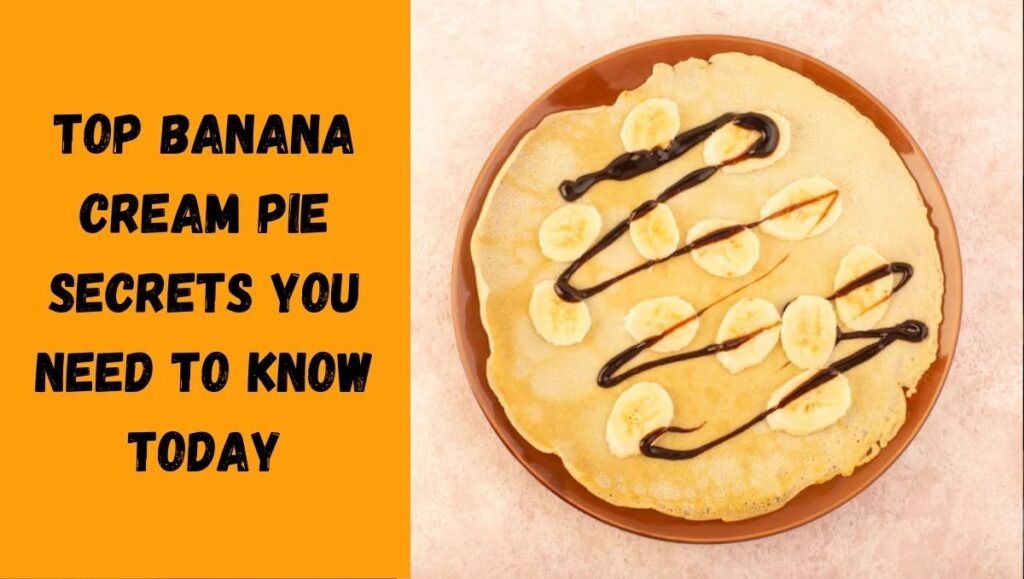Popular and classic French dessert Apple Tarte Tatin is prized for its sophisticated simplicity and very consoling taste. Though one mouthful reveals its actual character—layers of soft, caramelized apples, buttery richness, and a golden, flaky crust that shatters gently with each forkful—at first look it may appear simply another fruit tart. Not only are the ingredients unique but also the way the Apple Tarte Tatin is prepared. Unlike conventional tarts, which start with a pastry foundation loaded with fruit, the Tarte Tatin reverses the process – very literally. First caramelized in butter and sugar straight on a pan, the apples are then cooked topped with pastry dough. originally done, it’s turned onto a platter to show a shimmering top of syrupy, golden apples that originally coated the pan’s bottom.
This lovely treat originated in the little French town of Lamotte-Beuvron in the Loire Valley, an area renowned for its rich orchards and ageless cooking customs in the late 19th century. The Tatin sisters, Caroline and Stéphanie, who operated the Hôtel Tatin, are credited with famously creating, or maybe finding, the tart. According to the narrative, Stéphanie, the more gourmet-oriented of the two, was trying to make a classic apple pie.
She inadvertently cooked the apples in butter and sugar too long in her hurry or maybe inattention, enabling them to caramelize strongly in the pan. She topped the apples with a round of dough and put the pan into the oven, hoping fast to preserve the dessert. The apples had turned into a glossy, thick layer of caramel on top of a golden pastry shell when cooked and put onto a platter, and it was shockingly good.
Both locals and guests alike soon learned to love this “happy accident,” which became the main meal at their inn. Chefs in Paris first noticed the tart as news of it traveled outside Lamotte-Beuvron, and finally it found its way on menus of upscale bakeries and restaurants worldwide. Apple Tarte Tatin nowadays is an icon of French rustic cuisine, a dessert originated in a small countryside inn rather than a royal kitchen and that is both modest and sophisticated.
Apple Tarte Tatin appeals beyond its background and cooking because of its harmonious tastes and textures. The apples give a gentle bite and a little acidity; the caramel gives great sweetness with undertones of toffee. Whether puff or shortcrust, the pastry adds a sharp contrast that pulls everything together. Often presented warm, it is enhanced even more with a spoonful of vanilla ice cream, crème fraîche, or whipped cream.
From its beginnings and variants to thorough recipes and professional advice, this book covers all there is to know about Apple Tarte Tatin. Whether your taste in cuisine is sophisticated, amateur home baker, or experienced pastry fanatic, you will discover lots of ideas and guidance on perfecting this ageless French classic.
History and Origins of Apple Tarte Tatin
The Apple Tartre Tatin’s legendary beginnings date back to the late 19th century in the tranquil French town of Lamotte-Beuvron, which is tucked away in the Loire Valley and known for its rich gastronomic legacy and pastoral beauty. Two sisters, Stéphanie and Caroline Tatin, who managed the small but well-liked country inn Hôtel Tatin, drove the central story thread.
Caroline took care of the front of house while Stéphanie, the older, was renowned for her exacting culinary style. Stéphanie unintentionally left the apples boiling in butter and sugar for too long one day making a thick caramel while making a typical apple pie. She covered the apples with a pastry shell and cooked the pan in the oven trying to rescue the dessert. Inverting it revealed a golden, glossy dessert, a wonderful mix of flaky crust and caramelized apples. The dish became legendary, praised both nationally and finally internationally.
Ingredients and Preparation Essentials
Making a flawless Apple Tarte Tatin demands both meticulous preparation and premium ingredients. Key components include unsalted butter, grained sugar, puff pastry or shortcrust dough, tart yet sweet apples such as Granny Smith or Golden Delicious. The ultimate taste and texture of a tart depend much on the apple used. Ideally, apples that keep their shape well after cooking are those that are overripe as they could get mushy.
Combining butter and sugar produces a golden caramel basis that covers the apples as they cook, therefore adding great taste to the pie. Laid on top, the pastry cooks till crisp and brown. Arranging the apples securely in the pan for even cooking, making sure the dough is precisely wrapped, and carefully caramelizing the sugar and butter without burning all count in preparation. A traditional Tarte Tatin texture and taste depend on these processes.
Step-by-Step Recipe for Classic Apple Tarte Tatin
Making an Apple Tarte Tatin may be divided up into unambiguous success-oriented stages. Melting sugar with butter in a heavy ovenproof pan until golden brown first makes the caramel. Add peeled, quartered apples next, closely arranged and slowly cooked to soak in the caramel. The apples should be just mushy but maintain their form after around fifteen minutes.
Cover the apples then with a circular pastry sheet, tucking the sides within the pan. The pastry should be golden and crisp after about 25 to 30 minutes of baking in a preheated oven set to 375°F (190°C). Let the tart chill for a few minutes at last, then gently turn it onto a platter. Nestled between flaky pastry, the caramel-coated apples take the stage in the tart. Although this procedure calls for patience and meticulous attention to detail, the outcome is breathtakingly good.
Variations and Serving Suggestions for Apple Tarte Tatin
Though the traditional Apple Tarte Tatin is a masterwork on its own, there are many of alternatives to investigate. For further complexity, some toss the caramel with a dash of Calvados, a Normandy apple brandy. Others combine for warmth and richness spices like cinnamon, nutmeg, or vanilla into the caramel or apples. For a variation on the classic tart, pears or stone fruits will work.
Serving Apple Tarte Tatin warm beside a dab of crème fraîche, vanilla ice cream, or whipped cream balances the sweetness and accentuates its flavors. It goes nicely with an apple cider or glass of late-harvest white wine. Some cooks put sea salt on top for a salty touch then flip to accentuate the caramel’s sweetness. These variances make the tart interesting and flexible for many events.
Nutritional Information and Health Aspects
Although Apple Tarte Tatin is decadent, its main ingredient—apples—which are strong in fiber and vitamin C naturally provides nutrition. Still, the tart is somewhat heavy in calories and sugars because of the caramelization process combining butter and sugar. Depending on recipe details and serving size, Apple Tarte Tatin usually has between 300 and 400 calories.
From the butter, the tart offers some fat; from the sugar and dough, it offers carbs. For individuals watching their sugar consumption, changes like cutting sugar or substituting whole wheat pastry could help to make it somewhat better. Also, savoring the dessert without overindulgence depends on its quantity management. Apple Tarte Tatin is a delicious delight, yet its natural fruit content brings a nutritious balance lacking in many other sweets.
Comparison of Apple Varieties for Tarte Tatin
| Apple Variety | Flavor Profile | Texture When Cooked | Best Use in Tarte Tatin |
|---|---|---|---|
| Granny Smith | Tart, slightly sour | Firm, holds shape | Classic choice, balances sweetness |
| Golden Delicious | Sweet, mellow | Soft but holds shape | Sweeter, softer texture |
| Braeburn | Sweet-tart, spicy | Firm, retains shape | Adds complexity |
| Pink Lady | Crisp, tart-sweet | Firm, holds shape | Good for texture and flavor balance |
| Fuji | Very sweet | Softer texture | For sweeter, softer tarts |
Tips and Tricks for Perfect Apple Tarte Tatin Every Time
Perfect Apple Tarte Tatin calls for careful attention to several elements. For consistent heat distribution during caramelization, use an ovenproof skillet with a heavy-bottom. Slow and low melting caramel helps to prevent scorching and bitterness; do not hurry it. Tightly arrange the apples without gaps; they shrink while cooking and you want a consistent layer.
Make sure pastry covers are thin enough to cook through yet robust enough to keep together when flipped. Before flipping, let the tart cool somewhat; use a big dish to prevent mishaps. Some advise buttering the pan thoroughly well ahead of time for simpler removal. Following these guidelines will enable even beginners to master the technique and produce a visually beautiful and delicious tart.
Cultural Significance and Popularity Worldwide
One of the best-known French desserts worldwide, Apple Tarte Tatin is very dear in French cooking tradition. Beyond its backstory, it captures the simplicity and inventiveness of French home cookery. It is routinely seen at fine dining establishments all over, French bistros, and patisseries.
Its appeal has resulted in several variations and inclusion into gastronomic courses and TV presentations. Especially in fall when apples are gathered, the tart also represents French hospitality and seasonal cookery. Both formal and informal meals alike turn to this dessert as its harmony of rich caramelized tastes with fresh fruit appeals everywhere. The heritage of the Apple Tarte Tatin reflects the ageless attraction of simple yet sophisticated food and keeps developing.
FAQ’s
Can I use any type of apple for Tarte Tatin?
While you can use various apples, firmer varieties like Granny Smith or Braeburn are preferred because they hold their shape and balance the tart’s sweetness.
How long can I store Apple Tarte Tatin?
It is best eaten fresh but can be stored in the refrigerator for up to 2 days, covered. Reheat gently before serving.
Can I make Apple Tarte Tatin gluten-free?
Yes, substitute regular pastry with gluten-free puff or shortcrust pastry available in stores or homemade versions.
Is it necessary to flip the tart immediately after baking?
It’s best to let the tart cool for a few minutes to let the caramel set, then flip carefully to avoid spills and breakage.
Can I prepare Apple Tarte Tatin ahead of time?
You can prepare the caramelized apples in advance and refrigerate, but bake and flip the tart just before serving for best results.
| Home Page | Click Here |
| Dessert | Click Here |


